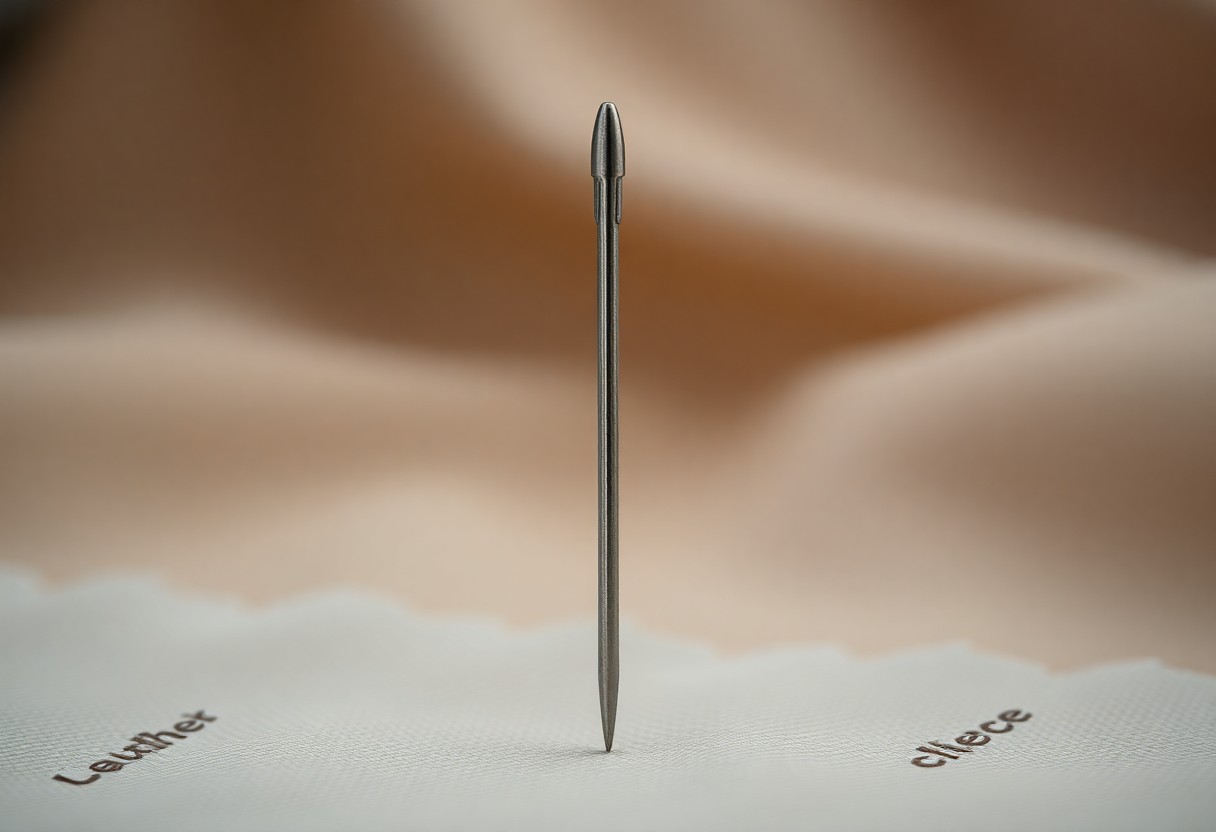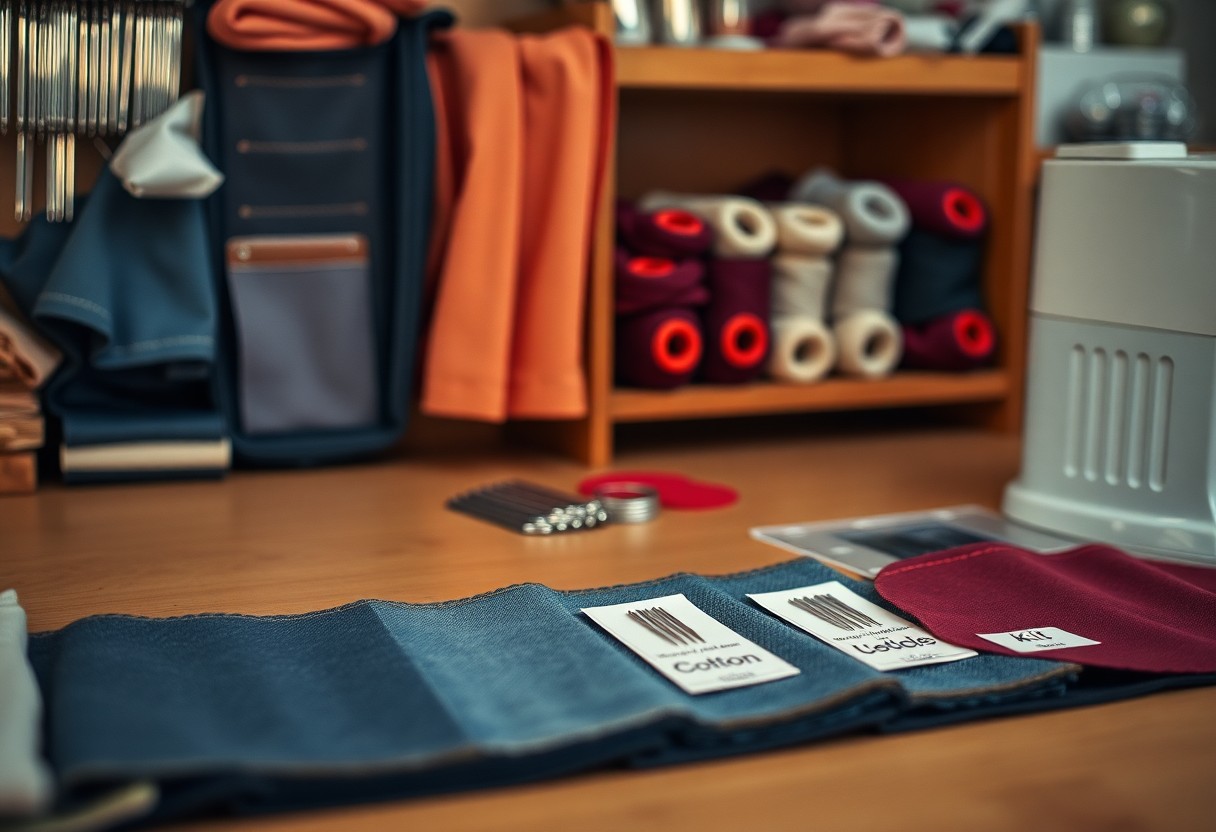There’s no one-size-fits-all when it comes to sewing machine needles, and selecting the right one is important for achieving the best results with your projects. Using the correct needle can make a significant difference in how well your fabric performs and how smoothly your sewing process goes. This guide provides you with the knowledge to pair your needles with various fabric types, ensuring that you get the desired finish while avoiding potential issues like skipped stitches or fabric damage.

The Anatomy of a Sewing Machine Needle
A sewing machine needle might seem simple, but its design is meticulously crafted for various tasks. Understanding its parts can help you choose the right needle for your projects. The shank holds the needle in place, the neck allows for thread movement, and the blade tapers to a sharp point for piercing fabric. The eye holds the thread, while the scarf promotes smooth thread delivery. By grasping these elements, you can improve your sewing accuracy and fabric handling.
Key Components of Needles
Your sewing machine needle consists of several key components, each serving a specific purpose. The shank is the top portion that fits into the machine, while the neck connects the shank to the blade, designed for optimal thread flow. The blade, which varies in thickness and shape, determines the type of fabric the needle can penetrate. The eye allows the thread to pass through, and the scarf is a small indentation that facilitates smooth stitching by ensuring proper thread tension.
Needle Sizes and Their Impact
Choosing the correct needle size significantly impacts your sewing experience and the quality of your finished project. Needle sizes are denoted by numbers, generally ranging from 60 to 120 (or 8 to 19). A smaller number represents a finer needle suited for lightweight fabrics, while larger numbers are appropriate for heavy materials. Using the right size helps prevent fabric damage, skipped stitches, and thread breakage, ultimately enhancing your sewing efficiency.
Needle size greatly influences how threads interact with fabric fibers. For instance, a size 70/10 needle works well with delicate fabrics like chiffon or silk, ensuring minimal damage and precise stitches. Contrarily, a size 90/14 needle is ideal for medium-weight fabrics like cotton, while a size 100/16 or larger is necessary for heavy materials like denim. Selecting the appropriate size not only improves your project’s quality but also extends the life of your needle and sewing machine.

Fabric-Focused Needle Selection
Your choice of needle can make or break your sewing project, impacting everything from the final look to the ease of sewing. Understanding how to select the right needle based on the fabric type not only enhances your results but also prolongs the life of both your fabric and sewing machine. Each fabric possesses unique characteristics that demand specific needle types, and knowing how to navigate these options is key to successful sewing.
Identifying Your Fabric Type
Matching Needles to Fabric Characteristics
The Science of Needle Impact
Your sewing machine needle significantly influences your sewing experience and the outcome of your projects. Different fabrics yield different responses to needle types, affecting tension, feed, and overall stitch formation. For instance, a heavy needle may create holes in lightweight materials, while a fine needle can struggle to penetrate thick, layered fabrics. Choosing the appropriate needle is not just about compatibility; it’s about understanding the interaction between the needle and the fabric to achieve optimal results.
How Needles Affect Stitch Quality
Stitch quality directly relates to needle selection. A needle designed for a specific fabric type ensures that stitches are uniform and secure. For example, using a ballpoint needle on knits allows the needle to slide between fibers without damaging them, resulting in a smooth, stretchable stitch. Conversely, using the wrong needle can lead to skipped stitches, thread breakage, and fabric damage, undermining the integrity of your work.
Common Sewing Challenges Linked to Needle Choice
Improper needle choice can lead to various sewing obstacles that hinder your progress. Issues such as puckering, skipped stitches, and fabric tearing often arise when the needle is mismatched with the fabric type. Many sewists underestimate the impact of needle size and type, leading to frustration and unsatisfactory results. Recognizing these challenges early can save time and resources on your projects.
Skipped stitches frequently occur when using a needle not suited for the fabric’s thickness or type, such as attempting to sew denim with a standard needle. Puckering can happen with overly fine needles on thicker fabrics; this creates tension imbalance. Fraying edges might indicate that you’re using a needle with a dull point or the wrong type for the job, while needle breakage often results from sewing too quickly on heavy materials or using an incorrect needle type. Identifying the right needle is vital to avoid these sewing challenges and ensure a smooth, successful project.
Specialized Needles for Unique Projects
For specialized projects, selecting the right needle can significantly enhance your sewing experience and results. From embroidery to leatherwork, there are needles designed specifically for different tasks, ensuring you achieve the best possible finish. Understanding the unique characteristics of these needles can not only improve stitch quality but also prevent damage to your fabrics, making your creative process smoother and more enjoyable.
Needles for Quilting and Embellishments
Quilting needles feature a tapered point that allows you to easily penetrate multiple layers of fabric. These needles help you avoid snagging while ensuring accurate stitching. For embellishments, consider using specialty needles, such as those with larger eyes, which accommodate thicker threads or embellishing techniques, adding texture and interest to your projects.
When to Use Twin and Specialty Needles
Twin and specialty needles are perfect for creating decorative effects and parallel stitching. Use twin needles for hems and pintucks, allowing you to sew two lines of stitching simultaneously. Specialty needles, like the wing needle or jersey needle, are designed for specific applications, like creating openwork or sewing stretch fabrics, respectively, enhancing your design possibilities.
Using twin needles can transform your sewing projects by enabling parallel stitching, which produces a professional finish on hems or decorative edges. Opt for a twin needle with the appropriate distance between the points based on your desired stitch width. Specialty needles, like the wing needle, effectively leave larger holes in the fabric, ideal for heirloom techniques and delicate work. Selecting the right type can elevate the level of detail and creativity in your projects, so always keep a variety on hand for different applications.
Needle Maintenance and Best Practices
Maintaining your sewing machine needles is vital for optimal performance and the longevity of your projects. Regularly inspect your needles for signs of wear, use the correct needle type for your fabric, and change them after every 8 hours of sewing or when you encounter issues like skipped stitches or fabric snags. Keeping a clean workspace and organizing your needles also helps in ensuring you always have the right tool on hand.
Caring for Your Needles to Extend Life Span
To extend the life span of your needles, store them properly in a needle case and keep them free from dust and moisture. Avoid using excessive force while sewing, which can lead to bending or breaking. Regularly clean your machine to prevent debris from affecting your needle’s operation, and always use the appropriate needle size and type for your fabric to minimize wear and tear.
Signs It’s Time to Replace Your Needle
Several signs indicate that it’s time to replace your needle. Look for skipped stitches, frayed fabric edges, or unusual sounds while sewing. If you notice these issues, inspect the needle tip: a bent or dull needle can create significant problems. Additionally, a needle that produces uneven stitches or leaves tiny holes in the fabric is often no longer sharp enough for consistent performance.
Skipped stitches are a clear indication that your needle may be worn out. A needle’s sharpness directly affects stitch quality; if you experience inconsistent tension or the fabric jams, it often means your needle isn’t doing its job. Check for any visible damage, as even minor bends can impact functionality. Failing to replace a damaged needle can lead to more fabric issues and even cause damage to your sewing machine, making timely replacements vital for maintaining both your projects and your equipment.
Final Words
Presently, selecting the right sewing machine needle for your fabric type can significantly enhance your sewing experience. By understanding the specific properties of each needle and how they interact with various materials, you ensure better stitch quality and reduce the risk of damage. Equipped with this guide, you can confidently choose the correct needle for your projects, making your sewing more efficient and enjoyable. Take the time to match your needle to your fabric, and you’ll see a noticeable difference in your results.
FAQ
Q: What type of needle should I use for quilting cotton?
A: For quilting cotton, a 90/14 Universal or a 80/12 Quilting needle is ideal. These needles have a tapered point that easily pierces the fabric without causing damage, allowing for clean seams and precise stitching.
Q: How do I choose a needle for knits and stretch fabrics?
A: When working with knits and stretch fabrics, it’s best to use a ballpoint needle, typically in sizes 75/11 or 80/12. The rounded tip allows the needle to pass between the fibers rather than cutting through them, preventing runs and snags in the fabric.
Q: What needle should I select for sewing denim?
A: For denim, use a 90/14 or 100/16 Jeans/Denim needle. These needles are designed with a thicker shaft and a strong, sharp point to penetrate multiple layers of heavy fabric, making them perfect for topstitching and seams on denim projects.
